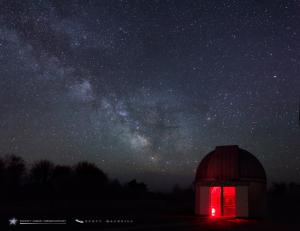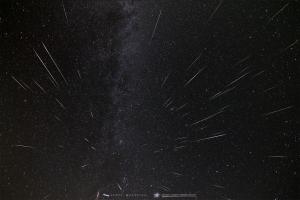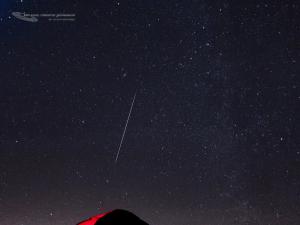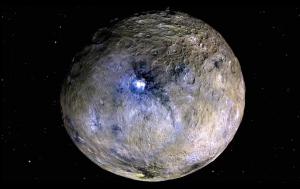
Stargazing Night
- Where:
- Frosty Drew Observatory
- When:
- Friday December 11, 2015 at 6:00 p.m.
- Cost:
- $1 Suggested Donation per Person
Tonight is Stargazing Night at Frosty Drew Observatory and weather conditions remain somewhat variable. We can largely expect mostly cloudy skies at the start of the night, progressively becoming clear after 8:00 p.m. Though the clearing does not appear to be lasting with clouds moving back in after midnight. This is rather unfortunate since tonight is the New Moon which would have offered us boundless opportunities to observe the super dark skies over Frosty Drew. Since the forecast is variable, we will take the night as it goes and see what the skies offer.
We plan to open the Observatory and Sky Theatre at 6:00 p.m. tonight. The Observatory will start off on standby while we wait for clearings. Once skies start to clear we will direct our telescopes towards nebulae, star clusters, and galaxies. Otherwise, binary stars will provide us an OK view through thin cloud cover. In the Sky Theatre we will show our popular astro-photo feature which showcases photographs of celestial objects captured at Frosty Drew Observatory. Our closing up time will depend on the weather. We will run with a best-attempt approach and will likely remain on site until clouds move back in.
Overall, tonight's forecast is not all that bad. The skies will look pretty sorry to start, though clearings should happen quickly. Once the skies clear, we should have a good two-to-three hours of viewing times before the clouds move back in. Add in that the Geminid Meteor Shower is well underway and about to peak and we will have dozens of shooting stars lighting up the sky. That alone will make it totally worth your time to take the trip to Frosty Drew tonight and catch site of a nice precursor to one of the best meteor showers of the year!
-------------------------------------------------------------------------
Weekly Happenings
Scott MacNeill
On Sunday, December 13th overnight into the 14th, the annual Geminid Meteor Shower will peak. Producing upwards of 120 meteors per hour, the Geminid shower is surely one of the best, if not the best, meteor shower of the year! This year the show comes with moonless skies for the entire shower, making for the best viewing conditions possible, and Frosty Drew Observatory will be open all night for the show.
Originating from Asteroid 3200 Phaethon, the Geminid shower is somewhat of an oddball shower. Most meteor showers originate from comets that leave a trail of debris behind when they swing around the Sun. 3200 Phaethon has a highly elliptical orbit around the Sun, which is quite comet like. This has led to speculation that 3200 Phaethon may be a dead comet or a rock comet. It takes 3200 Phaethon 1.4 years to complete a full solar orbit and it leaves behind a trail of dense debris. As Earth moves through the debris field, small particles enter Earth's atmosphere and burn up, producing a fabulous meteor display.
Historically, the Geminid shower was not so impressive. First observed around the mid 19th century, the shower only produced upwards of 10-20 meteors per hour. Though as the years passed the shower has been growing in intensity. Now the Geminids are considered the best and most reliable shower of the year by many, producing reliably over 100 meteors per hour during the peak period.
Viewing the Geminid Meteor Shower will be a cake walk, with the biggest challenge being preparations for cold conditions. Meteors will originate from the constellation Gemini with numbers increasing between 9:00 p.m. and sunrise. Bring out a blanket, sleeping bag, and something to relax on. Lay on your back with your feet to the south and look to the zenith (straight up). Since this is a late autumn shower, winter attire is absolute! Long Johns, winter coat, hat, boots, and gloves will be required. Adequately preparing for the cold will make the difference between a cold miserable meteor shower and a fabulous night of shooting stars.
The Gemind shower is certainly not the meteor shower to miss! Since the shower starts taking off early, it's a great meteor watching opportunity for the wee folk who have school the following morning. Frosty Drew Observatory will open for the entire shower starting at 6:00 p.m. The Observatory telescope will be available for viewing until 8:30 p.m., after which we will all step outside to catch the shower. The Sky Theatre will be toasty warm and open all night serving as an excellent warm up hut for those cold moments. If there was only one meteor shower of the year to get out for, this is it. So pack up a thermos of warm comfy, grab your friends and family, and set out to the wide open dark skies of Frosty Drew and ring in the Holiday Season with a fabulous display of shooting stars!
This past week, the NASA Dawn mission, which currently resides in orbit around dwarf planet Ceres, has reached its final orbital altitude at around 240 miles above Ceres surface. At this final altitude, Dawn will begin collecting images of the surface at a resolution of 120 feet per pixel. Additionally, observation in infrared, gamma ray and neutron spectra, as well as gravity data will be collected. The images and data coming back from the Dawn mission have been spectacular, though many mysteries still remain. Check out the images coming back from the fabulous Dawn mission at the NASA Dawn images gallery. Then swing over to the NASA Dawn mission page and get up to speed on this amazing mission taking place in the Asteroid Belt.
-Scott



